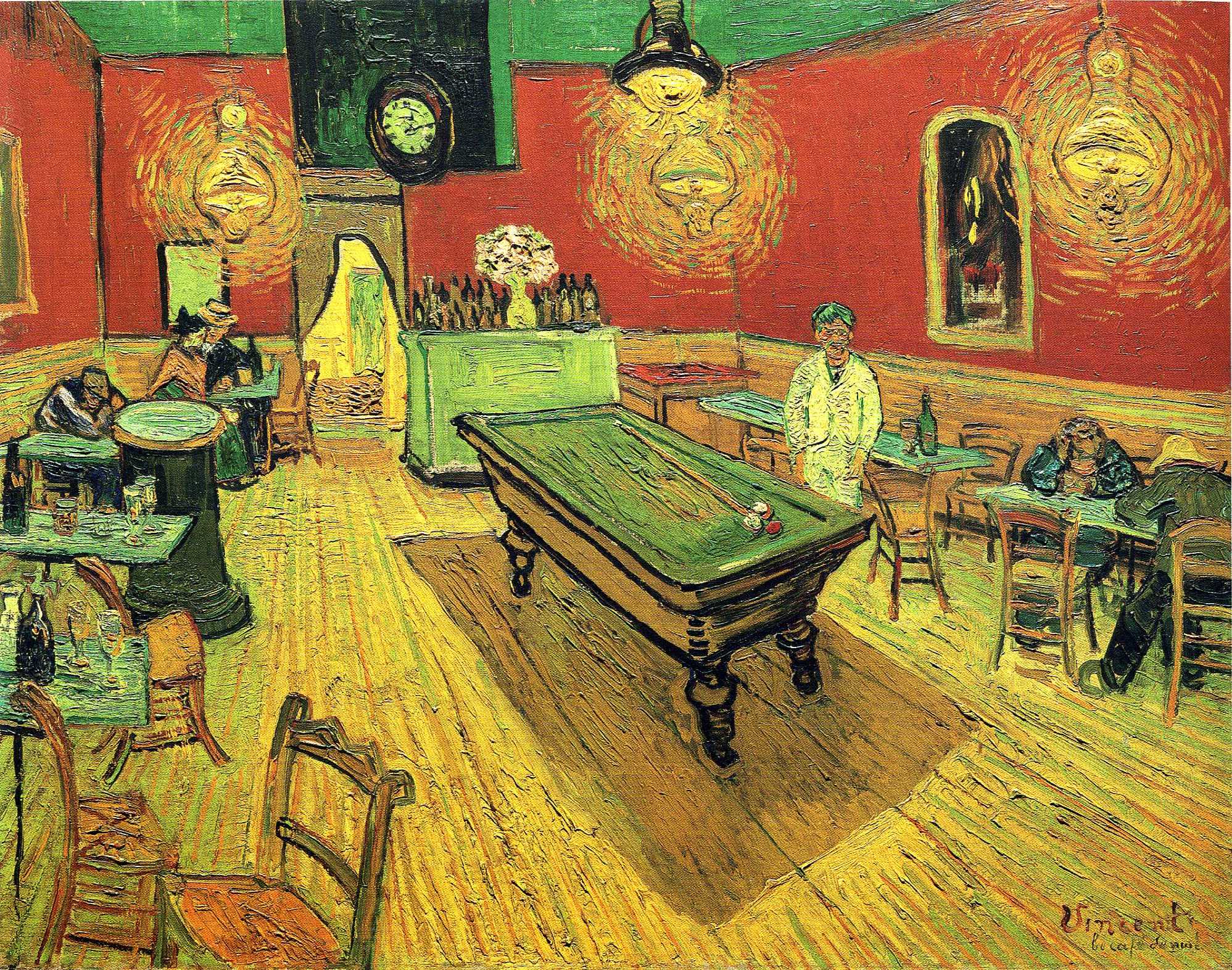This is how Rilke describes van Gogh’s “The Night Cafe” (“Letters on Cézanne”, October 17, 1907):
… artificial wakefulness in wine red, lamp yellow, deep and utterly shallow green, with three mirrors, each of which contains a different emptiness

Deep and utterly shallow green — sounds like a paradox, an oxymoron even. And it captures perfectly and precisely this remarkable color composition, striking in its impossible simplicity.
This color composition is built out of three hues (green, yellow, red) and three values (dark, light, in-between).
Its red exists in mid-value version only; it is one flat, unmodulated color area, very uncharacteristic for mature van Gogh.
There are two yellows, light and mid-value (where it turns into ochre).
And only green spans the whole range between light and darkness (where it dissolves into black). Deep and utterly shallow, green is everywhere, like van Gogh’s despair. By being everywhere, it negates blue, takes its place where the eye would expect it. As though there is no blue in this world: no sky, no heaven, no spirit.
The pilot run of the program based on Rilke’s “Letters on Cézanne” starts this Sunday (November 5, 2017). The sign-up form will be closed on Saturday, so basically, this is the last chance to join the pilot.
[…] don’t want to influence your perception here, but if you are interested in my take on it, you can read it here (preferably after you’ve spent some time with the painting on your […]